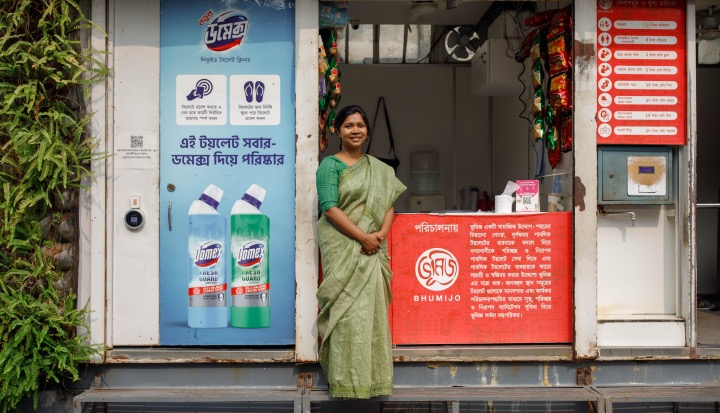More than two billion people in the world have access to safe water and sewerage facilities. When these services are unavailable, people trust dangerous water sources such as rivers, ponds and water bodies shared with animals, cleaning and other daily tasks. Most of the existing toilets must apply open defecation that increases contaminated water risk. Safe or contaminated water can contribute to the spread of infectious diseases such as cholera, hepatitis and tifoid, and more intangible problems, including more self-respect, dignity and productivity.
The water and sewerage, small and medium enterprises (KOMs) – generally helps the government to fill in a critical gap by providing the infrastructure such as pipes and toilets – such as companies and toilets managing public services in rural and difficult areas. Soap and Repair and maintenance, water distribution and waste disposal in areas such as chlorinating tablets and services. It is important, but the effects of improved infrastructure can be accelerated.
By strengthening the need, approval, proper use and maintenance of their hygiene products and services, SMEs can play a key role in working healthy water, sewerage and hygiene (washing).
Through cooperation between TransformativeUnilever, Britain’s External, Unity and Development Administration (FCDO) and O-FCDO) and O-and Johns Hopkins, recent studies, how to increase the impact of behavioral behavior of behavior, food, food operation And around the disposal of wastes, the potential life in life understands the value of safe water and related hygiene behavior.
Effective behavioral change requires interventions to match specific contexts. To access and use socio-cultural norms, family dynamics and sexual roles, wash products and services. SMEs should conduct forming research, including networking and attitude maps to identify reputable sounds inside their communities. These individuals can be a champion to change champions, information exchange and new behavior and standards for change.
SMEs also need to recognize obstacles to the change of behavior, such as misconceptions about social practice or washing products and services. By solving these difficulties through the target communication and education, they can increase the trust and consistent use of their services.
The communities are integrated within the communities, and have unique advantages during the promotion of SME behavioral change. The concepts of local needs, obstacles and social dynamics allow them to establish confidence and patronage relationships with customers, both service providers, as well as an agency call.
For example, our research in Ghana has set a high level as a high impact on the use of houses and religious leaders, washing products and services. A priority toilet company is prioritized in South Africa, a traitor and a traitor to understand the needs of the abdominal parliament and committee members and to allow customers to begin to begin and spread the restroom facilities. Then they will increase the sales and service providers within the local community and increase the interaction with users. In just one society, Loowatt provides more than 100 toilets, provides more cleaner, safer sanitation than 350 people.
Behavioral change strategies also help create demand for SME products. When the communities adopt healthy habits, the development of a self-reinforcement period of health and business growth, they protect more laundry infrastructure and services. For example, the use of the toilet between women and girls can increase the demand for other hygiene products to create new market opportunities.
Communication is important for change of behavior. Data sharing information, effective communication SMEs, Customers and community are building relationships between stakeholders. Incomes the trust in SME, interests services and encourages people to accept healthy habits.
For example, SMEs can use customers as a defense of customers’ protection of their products. Our research in Ghana showed that these groups have the largest accessible and influence of potential new customers. Sixty-three percent of customers reported they discussed and / or show that they received the toilet. In addition, 83 percent of the participants expressed their intentions to buy a toilet with a former customer with a coming customer and reported 32 percent toilets.
Imagine the homeowners who promote the toilets and safe water sources in the financial and social benefits. The potential ripple effect can change hygiene experiences between all communities.
Behavioral change is not only for customers – it is important for themselves. To show long-term effects, SMEs should re-think of work models to prioritize customer relationships with market strategies. This includes creating continuous connections with customers who immediately stretched outside of transactions.
For example, SMEs should combine systems to track and evaluate behavioral change along with financial performance. Key indicators may include satisfaction with knowledge, adoption and detergent services. Such information allows you to accurately determine the approaches of the Cobs and measure the progress towards public health goals.
Community talks and washing problems and communicating behaviors and contact and support the speech and support customer interactions, both community health, as well as a positive period of community health, can also promote safe and healthy practices. This is a victory for businesses, for businesses and the people they serve.

